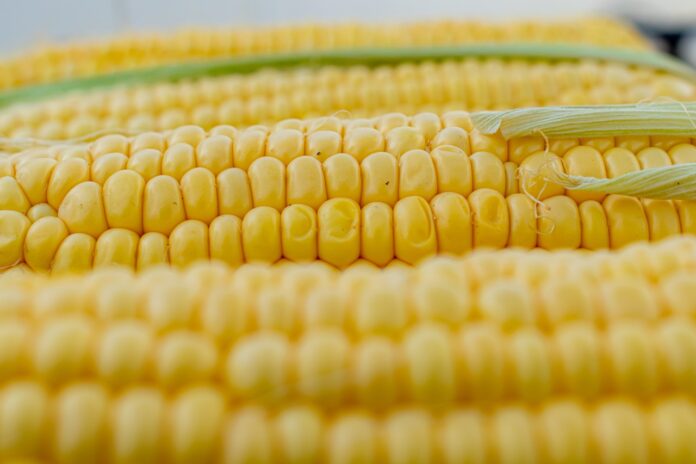The last time I wrote in this space, I commented that the cure for cheap corn is cheap corn. I thought of that again today as I studied an online article by Todd Hultman for DTN. He presented some interesting statistics that compared this year to 2017. In the process, he highlighted some reasons why corn and soybean prices could improve.
The fact is, any arguments for higher prices can be considered just whistling past the graveyard. Last week, we actually traded December corn futures under $4 at the close. We traded at $3.98 1/2 on Aug. 1. This means that, since the U.S. Department of Agriculture says that the cost of production for corn last year, 2023, was $907 per acre. Our current price puts our revenue 23% below the cost of production, which is estimated at $5.06 per bushel for the average producer.
Spec funds
The factor weighing down prices right now is the high level of shorts in the markets, particularly from the spec funds. While they do not control the markets, they have huge short-term impact on prices until fundamental factors make them flee the market or reverse their bets. The question to be resolved this summer is, are the funds too short?
There are good reasons why the funds are wrong. First, we will not really have a good yield report from USDA until October. In the meantime, many factors come into play. Remember that the cure for low prices is low prices. Partly for this reason, ethanol sales set a new record last week. We now look to produce almost 4% more ethanol than in the last marketing year.
Then, there are the exports. This year is on pace to be 37% better than last year. That is a big deal. We are on track to beat the USDA estimate of 2.225 billion bushels of exports in this year. Our exports are competitive right now. Our soybeans are now cheaper than the exports out of Brazil and Ukraine, on a delivered basis. They are only $2 per tonne higher than those from Argentina. Most of the time, we only are competitive before the South American harvest. That is not true this year.
Production problems
And then, we have the production problems. I have commented before that the market seems to assume that the crop has had ideal conditions. It has not. I talked this week to a farmer in Somerset, Ohio, southeast of Columbus, who says his corn has been way too dry. That is not the only negative to contend with.
We had heavy rains in the upper Midwest, heavy enough to raise water levels on the Upper Mississippi to troublesome levels. I follow National STOL contests on YouTube and was shocked to see one from early in the season in Wisconsin that showed planes landing over fields that showed extensive yellow damage from excessive water. We have had wind damage, hail and flooding in June and July.
We know all these things have happened, but we are having trouble quantifying them. The market acts like they never happened and don’t affect yields. The market is wrong about the effects, but it remains to be seen if it is wrong about the crop size. As I remind you regularly, even in the record years, we have local problems with growing the crops.
Looking at the numbers, September corn futures had a high Aug. 1 at $3.84. Yeah, that’s the high, if you haven’t been watching. The low that day was actually only $3.78. The recent high goes back to May 14, at $4.84 1/2. So, we have lost a dollar in less than three months, at a time when we thought corn was already too cheap to sell. Reality is a, well, a nasty word.
New crops
It is the December new crop corn contract with which we have been most concerned. On the last day of July, we closed below the benchmark $4 by one tick, $3.99 3/4, after a trade that day of $3.95. It is the close that we worry about, and we got worse the next day, closing at $3.98 1/2.
The December corn rallied 11 cents from a new low Aug. 5, closing at $4.07, up ¾ cent. Unfortunately, we were down again in early trading Aug. 6, at $4.02 1/2, down 4 1/2 cents. Having trading that low under $4 after watching for it for so long, the market may be willing to stay above that for a little while if it can find a good reason.
Meanwhile, November new crop soybeans are flirting with the benchmark $10 number. On May 7, we had a recent high of $12.30 1/2. By the end of July, we traded a low of $10.15. The low so far Aug. 6 was at $10.21, but we were currently “only” at $10.22 1/4, but that is down 18 1/2 cents from the Monday close. On Aug. 5, soybeans rallied from the low by 25 cents to close at $10.40 3/4, but we have already given most of that gain away as this was being written Aug. 6.
That gets us to the cookie wheat on the Chicago market. There is no good way of saying that we have declined sharply there. The recent high was a quick rally to $7.39 1/4 near the end of May. The low came July 29, (my birthday, for those of you who still need to send presents) at $5.14 1/4. We traded $5.39 1/2 at the close Aug. 5, still down two dollars.












